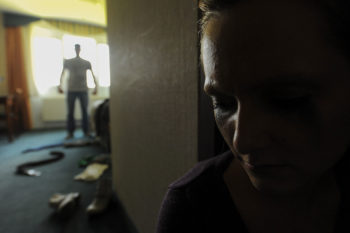
(Credit: Senior Airman Rusty Frank, U.S. Air Force via Wikimedia))
Australia has new standards for how to report on domestic abuse, or family violence.
David Weisbrot, the chair of the press council, told iMediaEthics what prompted the creation of the guidance. “It was a slow burning issue for a while, and the subject of complaints from time to time,” said Weisbrot. “But then a confluence of events pushed it to the fore.” Specifically, three incidents led to the discussion of best practices.
- In September 2014, the press council received complaints about a man who murdered his family and then killed himself. But the news coverage reported very favorably about him, including saying he was “incredibly generous and kind-hearted,” “super, super patient,” “the most gentle, considerate bloke,” and that his murders were because of stress. (More on that specific case here.)
- Later, the Women’s League Center pointed out incidents where reporting on domestic violence either blamed the victims or minimized the matter.
- Finally, domestic abuse survivor Rosie Batty was named Australian of the Year in 2015, “which placed a spotlight on family violence in Australia, as well as the media representation of it.”
The press council began discussing best practices for reporting on domestic violence, including by talking with survivors and journalists, Weisbrot told iMediaEthics.
“We began a series of Round Tables (in different cities) bringing together family violence survivors, service providers (crisis housing, legal services, counselors etc), senior police officers and editors and journalists to consider how the media could and should improve media ethics and practice in response to these concerns,” Weisbrot told iMediaEthics.
The guidelines are part of the council’s Standards of Practice member publications should follow. “The Guidelines are meant to encourage good reporting in the first instance and thus to avoid complaints; however, in the event that a complaint is received alleging a breach of the General Principles, then we use the relevant Guideline to help interpret what reasonable steps a publication should have taken to abide by the GPs (eg regarding fairness, accuracy, balance, avoiding causing offence or prejudice, etc),” Weisbrot explained.
The council’s guidelines remind journalists that family or domestic violence could be anything from physical to emotional violence or harassment or intimidation and is reliant on the “relationship between the alleged offender and the victim.” Further, the council noted that there are “at least 40 different laws in this area” in addition to the council’s guidance that may dictate how media reports on domestic violence.
What do the Guidelines Say?
“The safety and well-being of those affected by family violence must be the primary consideration,” the guidelines advise. “Publications should not publish information that could cause or contribute to the risk of harm, offence or distress. Survivors of family violence often comment that their pain and suffering was exacerbated by media coverage.”
The guidelines point out journalists need to be sensitive to what sources might be dealing and may need to make sources anonymous.
“In some circumstances, it may not be safe, appropriate or legal to use real names or other identifying information. When interviewing a person affected by family violence, journalists should consider whether the person has the necessary support. Publications should consider the unintended consequences that interviews and published material might have on those affected by family violence, especially children, in the immediate short term and the longer term.”
Journalists are reminded to make sure stories don’t blame victims or suggest causes for the violence, especially if mental illness could be a factor.
The press council also pointed out there may be cultural issues at play. “When reporting on matters that have occurred within Aboriginal and Torres Strait Islander communities, there are cultural practices and sensitivities around releasing names or images of deceased persons from these communities that should be considered,” the guidelines state. “Similarly, publications should endeavor to be aware of such sensitivities in other Australian communities.”
The guidelines call for careful use of language, accurate description of relationships if relevant, and inclusion of resources for those who may need help.





